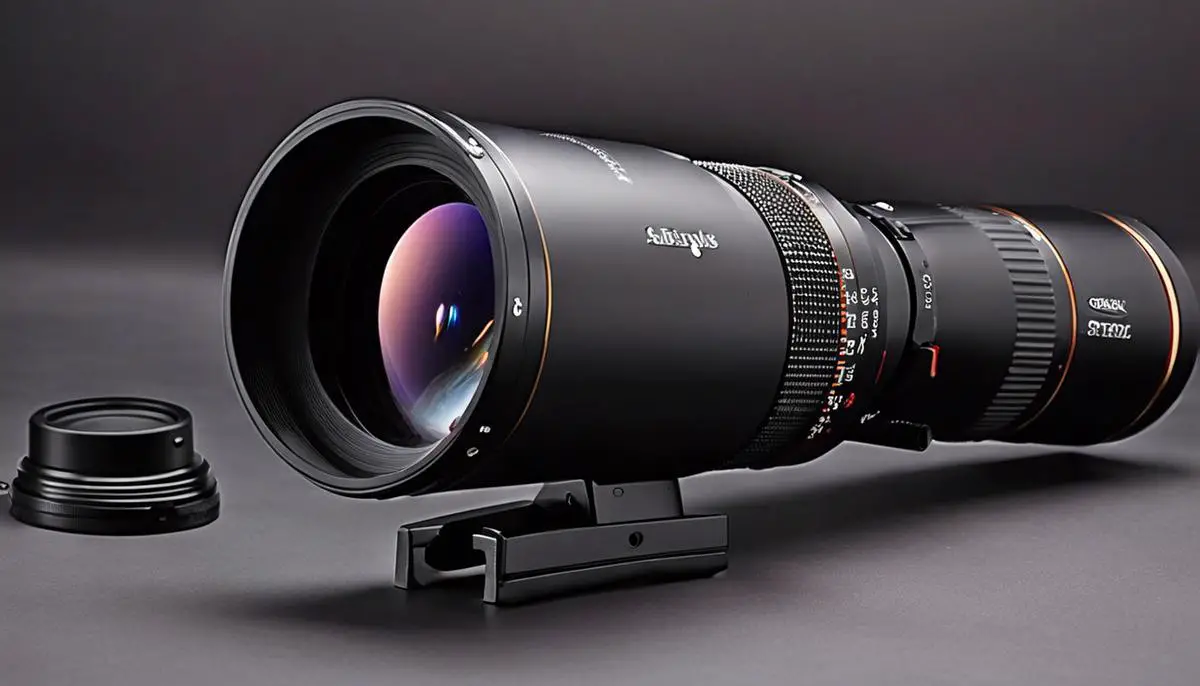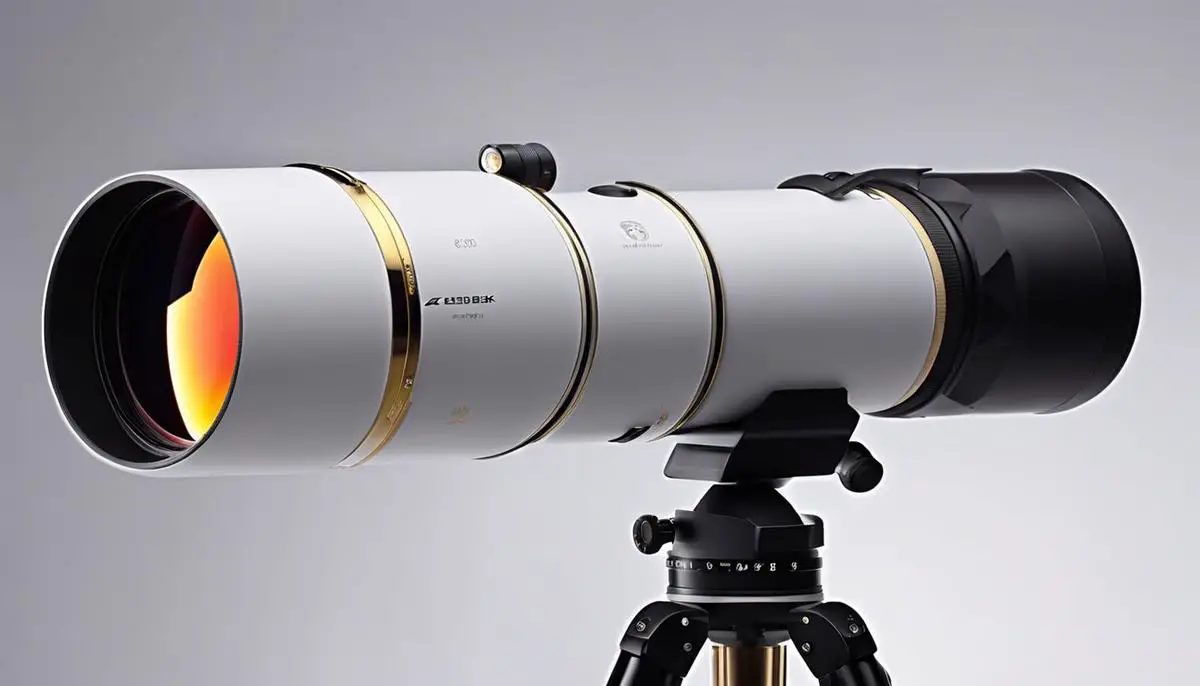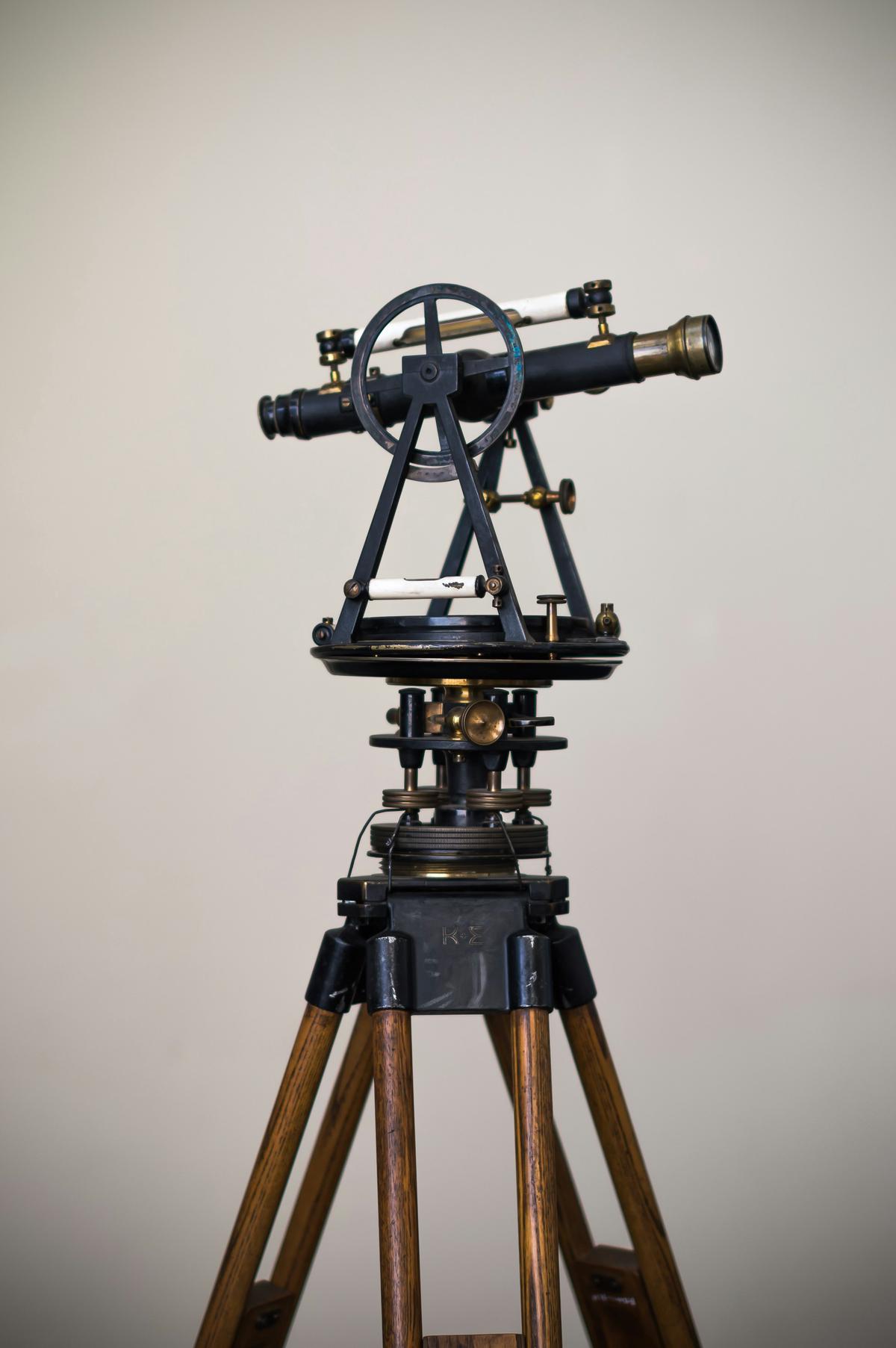Embarking on a cosmic journey doesn’t mean leaving the marvels of the night sky behind. For the avid traveler with eyes turned skyward, a well-chosen portable telescope can be a game-changer. This guide illuminates the path to selecting a telescope that marries the convenience of transport with the wonders of astronomical observation. As we journey through the considerations of portability, ease of use, and the uncompromising demand for optical quality, we will explore the innovative designs and cutting-edge materials that define today’s best travel-ready telescopes. Whether you’re gazing at the Milky Way from a remote beach or admiring the rings of Saturn from a mountain retreat, understand how the right telescope can open up the universe to you, wherever you may roam.
Portability and Ease of Use
The Quest for the Ultimate Portable Travel Telescope: A Stargazer’s Toolkit
Stargazing aficionados and itinerant skywatchers, synchronize your celestial calendars! The quest for the ultimate portable travel telescope has taken a stellar leap forward with innovation and design reaching new heights. While the universe’s wonders have remained unchanged for millennia, the tools we use to explore it are constantly evolving. And when it comes to travel telescopes, portability is as paramount as the clarity of the night sky.
But what exactly are the top-tier features that elevate a travel telescope from good to absolutely celestial? Let’s unpack the essential components that contribute to superior portability in these instruments, ensuring you keep your eye on the stars without a hitch in your galactic gallivanting.
Compactness and Collapsibility
First and foremost, size matters. The best travel telescopes embrace compactness without compromising on quality. Modern materials and engineering have given rise to telescopes that can compact down into unbelievably small packages, some even fitting snugly into a daypack. Telescopes with collapsible tube designs or retractable features will earn high marks on any spacetime traveler’s checklist.
Weight: Every Gram Counts
Nobody wants to lug around a black hole’s worth of weight on their interstellar road trips. That’s why the new generation of travel telescopes prioritize lightweight materials such as carbon fiber or aluminum alloys. This ensures they tip the scales in the right direction – towards the lightest possible weight, making it a breeze to carry from one dark sky oasis to the next.
Quick Assembly: Minimal Hassle Under the Stars
Time is of the essence when chasing celestial alignments or setting up upon arrival at a remote viewing spot. Telescopes that champion a no-tools-required assembly process let you get right down to your cosmic observations. Look for systems with simple, intuitive setups that won’t have you fumbling in the dark or wrestling with cumbersome components.
Optical Prowess: The Heart of the Matter
What are stars without their sparkle? Superior portability must not eclipse optical quality. Multi-coated lenses and high-quality mirrors are non-negotiable for clear, crisp views of celestial bodies. Scout for telescopes that balance their portability with serious magnification capabilities and wide aperture – this will assure you unparalleled views without the bulk of traditional models.
Durability for the Daring
A rugged, resolute build comes hand-in-hand with portability for a travel telescope. These observatory compatriots should withstand the rigors of travel, from jostles in the trunk to bumps on a rocky trail. Telescopes with robust construction and shock-resistant features will ensure that no matter where your adventures may lead, your view of the cosmos remains undistorted.
Mount Stability: Keeping It Grounded
A portable telescope demands a reliable, stable mount, one that can be quickly set up on any terrain. This is often a balance of the mount’s weight against its steadiness – heavier is generally more stable, but the latest designs provide innovative solutions that achieve stability while remaining lightweight. A solid mount makes all the difference when focusing on the distant reaches of outer space.
Ease of Use: A User-Friendly Universe
Finally, usability shouldn’t be rocket science. The perfect travel telescope is intuitive and user-friendly. Look for telescopes with electronic finders, smartphone adaptability, and straightforward tracking capability which allow for easy navigation of the night sky. This enhances the stargazing experience, allowing both neophytes and seasoned astronomers to explore the heavens with minimal setup time and effort.
The cosmos is calling, and the modern travel telescope is the answer for the itinerant observer seeking the perfect blend of portability, quality, and convenience. Whether it’s witnessing an eclipse from a mountain vista or tracing constellations on a beach, the right portable travel telescope transforms these experiences from mere moments to indelible memories etched in the stars.

Optical Quality and Performance
When you’re gearing up to marvel at the cosmos through a travel telescope, the quality of your optics can either make or break the experience. Skimp on this, and you’re quite literally left in the dark, struggling to enjoy the grandeur of the night sky. High-quality optics transform celestial bodies from faint smudges into crisp, defined wonders, compelling even the most casual stargazer to pause in awe.
The lenses and mirrors of a travel telescope are like the eyes through which we peer into the vast expanse of space. Superior optical elements ensure that light is precisely gathered and focused, giving you that crystal-clear vision of distant planets and galaxies. Without delving too deep into the nitty-gritty of fluorite and ED glass, know that these are not just fancy terms plastered on packaging, but the gatekeepers of clarity and color fidelity. They reduce chromatic aberration—essentially, they keep stars from looking like psychedelic light shows unless that’s what you’re observing!
In the pursuit of celestial clarity, magnification is a tempting monster. It’s easy to think that bigger must be better, but savvy stargazers understand that stability and clarity reign supreme. Overpowering your telescope with excessive zoom levels without the optical quality to back it can turn a night of stargazing into a blurry, shaky letdown. Opt for a telescope that balances magnification with optical excellence, ensuring the moons of Jupiter appear as sharp discs rather than disappointing blobs.
The field of view is another critical aspect tied directly to optical quality. A wider field of view can encompass more of the sky, offering a breathtaking panorama—especially useful when you’re tracking objects as they move. However, a poorly executed wide field of view can result in vignetting, where brightness drops off at the edges, or in a fish-eye effect that distorts the stars at the periphery.
Coatings are the unsung heroes in the world of telescope optics. Anti-reflective coatings breathe life into the images by maximizing light transmission and reducing glare. Every photon counts when you’re reaching across the cosmos, and these coatings ensure not a single speck of light is squandered. Imagine drinking a fine wine from a crystal-clear glass versus a murky bowl; it’s about savoring the pure, unadulterated essence of what you’re observing.
In conclusion, the optical quality of your travel telescope is the cornerstone of an exhilarating stargazing adventure. Cutting-edge materials, thoughtful design, and meticulous craftsmanship all play their part in delivering an unforgettable user experience. When these elements are in harmonious alignment, each stargazing session becomes a journey of clear, vibrant, and detailed exploration into the profound depths of space—no summary needed, the stars will write their own.

Durability and Materials
Making the Right Material Choices for Your Portable Telescope: A Guide to Durability and Performance
Stargazers know the importance of a dependable, clear, and durable portable telescope. For those looking to invest in a telescope that will endure the test of time and the rigors of travel, understanding the materials and construction that contribute to longevity is crucial.
Materials Matter: The Building Blocks of Lasting Telescopes
When it comes to materials, you might be surprised to learn that the makeup of a portable telescope significantly impacts its longevity. High-quality materials aren’t just about appearance; they’re about survival in diverse environments and resilience against the occasional bump or drop.
Aluminum and Carbon Fiber: The Dynamic Duo
Aluminum is a popular choice for telescope frames, offering a blend of lightness and strength that makes it ideal for portable models. It resists corrosion and can handle some rough handling, which is exactly what you need when packing for an impromptu stargazing adventure.
Another material increasingly making waves in the telescope scene is carbon fiber. Renowned for its low weight, high stiffness, and resistance to thermal expansion, carbon fiber isn’t affected by temperature changes as much as metal, meaning less fiddling with focus as temperatures drop at night.
Glass Types: A Clear View into the Cosmos
For the telescope’s heart – the optics – not all glass is created equal. Superior telescopes typically feature borosilicate or low-expansion glass. These materials maintain their shape across a range of temperatures, ensuring consistent performance and less time spent readjusting your view.
Additionally, some telescopes incorporate ED (Extra-low Dispersion) glass to correct chromatic aberration, giving you sharper, more accurate color representation in your celestial observations.
Reinforced Construction: Longevity by Design
Telescopes are precision instruments, and as such, their construction must be meticulously engineered. Look for telescopes that boast reinforced construction, be it through rubber armoring which acts as a shock absorber or through strategically placed braces that support and protect the most critical parts.
Opt for telescopes that have a proven track record of tight seals and internal reinforcement. Not only do these features protect against dust and moisture, damaging to sensitive optics, but they also ensure your telescope remains a steadfast companion on starry nights for years to come.
Endurance Engineered to the Last Screw
Attention to detail extends to the small parts as well – the screws, hinges, and mechanical interfaces undergo constant handling and adjustment, and these should be crafted from high-grade materials such as brass or stainless steel to resist wear and decay.
Connectivity and Modular Add-Ons: Future-Proofing Your Experience
Choosing a telescope that offers modular upgrades or replacement parts can extend its lifespan significantly. As your passion for astronomy grows, so will your desire for enhanced accessories. A telescope designed with upgradability in mind means you won’t be left stranded as technology advances.
The Ultimate Investment in Astronomy
Ultimately, investing in a portable telescope isn’t just about the immediate gratification of gazing upon the rings of Saturn or the swirls of the Andromeda Galaxy; it’s about ensuring those sights remain just as wondrous and accessible decades down the line.
By prioritizing high-quality materials like aluminum and carbon fiber, choosing the right glass for your optics, and paying attention to the details of construction and components, your portable telescope will be more than just an instrument – it will be a lasting portal to the stars.

Photo by soberanes on Unsplash
Technological Integration
Maximizing the Tech-Enhanced Stargazing Experience: Innovations in Portable Telescopes
The cosmos beckon, and for astronomy enthusiasts, accessibility to the stellar playground is paramount. Modern advancements in portable telescopes have revolutionized sky-gazing, transforming these devices into compact powerhouses of celestial discovery. But it’s not just the scope’s physical attributes that provide an edge – it’s the technological advancements that truly elevate the experience.
Integrated smart technology has become a game-changer. Portable scopes now boast GPS auto alignment, leading stargazers directly to celestial bodies with impressive accuracy. The sophistication of such systems allows even a novice to pinpoint distant galaxies, nebulae, and stars with the simplicity of a seasoned astronomer.
Imagine a telescope that not only guides you to the wonders above but also educates. Some models come equipped with extensive celestial databases and audio guides that provide real-time information on the sights in your eyepiece. Education intertwines with entertainment, making for an enriching experience that satisfies the curious mind.
Battery life and power sources are critical when traversing remote areas in search of the best stargazing spots. Portable telescopes are now more energy-efficient, with longer-lasting batteries and even solar-powered options. The last thing an enthusiast desires is for their journey through the stars to be cut short due to power constraints.
Connectivity has also infiltrated the realm of telescopes. Wireless control via smartphones and tablets affords convenience and flexibility, while built-in cameras capture high-resolution images and videos directly from the eyepiece. Sharing these celestial snapshots has never been easier, with immediate uploads to social media or cloud storage.
What’s more, on-the-fly image processing technology compensates for light pollution, often the bane of urban astronomers. Advanced software filters cut through the murk, enhancing the viewability of celestial wonders even from city limits.
Accessory compatibility can elevate a standard scope to a unique, personalized window to the heavens. Eyepiece options that range from wide-angle to high magnification, adaptable lens filters to combat various light conditions, and specialized camera adaptors for astrophotography enthusiasts all contribute to a tailored and heightened observational experience.
The portable telescope industry is on a relentless march toward higher quality experiences for all levels of sky watchers. From the solidification of optical systems which promise clear and crisp views to the thrills of capturing and sharing awe-inspiring cosmic vistas, technological enhancements are not just additions—they are integral components that transform star gazing into a truly astronomical adventure.
As the night sky unfurls above, these high-tech telescopes offer an escape into the cosmic ocean with the promise of immersion and discovery. For the earnest astronomer, embracing these technologies means embarking on an ever more profound journey through the stars. The future of portable telescopes gleams as brightly as the constellations they reveal—a future that continues to draw nearer, one technological breakthrough at a time.

Price Point and Value
A Traveler’s Guide to the Economic Ecosystem of Portable Telescopes
In the expansive universe of portable telescopes, the discerning traveler is often confronted with the question of cost versus quality. This in-depth analysis offers a road map to navigating the diverse price spectrum without sacrificing the celestial quest for clarity and awe.
Budget-Friendly Binoculars: A Stellar Starter
For the stargazing nomad on a budget, consider binoculars. Many overlook these dual-lensed cousins of telescopes as a feasible option for amateur astronomers. Offering considerable magnification at a fraction of the cost, they provide an excellent entry point. Lightweight and easy to pack, binoculars are a solid choice for celestial enthusiasts eager to gaze upwards without diving deep into their wallets.
Mid-Range Monocular Marvels: Bang for the Buck
Venturing into the mid-range, one uncovers a blend of affordability and functionality. Monocular telescopes present an upgraded experience with heightened magnification and portability. Ideal for the casual observer who appreciates the celestial landscape but isn’t ready to invest in a high-end telescope. With an array of options under $200, this segment offers a compromise between quality and economy.
Premium Portability: Investment in the Heavens
At the zenith of the market are the premium portable telescopes, designed for the aficionado of astronomy. These instruments are engineered with cutting-edge technology, superior optics, and durability that withstands the rigors of travel. Worth the investment, they deliver unrivaled clarity and precision for a transformative stargazing odyssey. Here, the belief is that the wonders of the cosmos deserve nothing less than the best that money can buy.
Ancillary Accoutrements: The Hidden Costs
Peering beyond the telescope itself, additional considerations lurk. Tripods, mounts, eyepieces, and protective cases contribute to a telescopic system’s total cost. Though some may balk at these expenditures, they are crucial for an unshakable gaze into the void of space. Opting for these add-ons furthers the quality of the experience and safeguards the investment.
Seasoned Savvy: Secondhand Starscopes
Thrifty travelers with a knack for bargains might explore the secondhand market. Pre-loved telescopes can be found at significantly lower prices, often offering high quality without the steep sticker shock. Inspecting the condition, verifying functionality, and ensuring the presence of all parts is paramount. When fortune favors the frugal, one could snag a stellar deal on a barely-used telescope, unlocking the heavens without unloading a fortune.
Conclusion: The Universe in Your Hands
Choosing the right portable telescope is a delicate dance between cost and quality, with options aplenty for every type of traveler and astronomer. Reflect upon personal priorities, be it budget constraints or premium performance, and decide accordingly. The night sky beckons with its celestial wonders, and with the right portable telescope in tow, it’s an observatory without bounds, ready to unveil the profound beauty that twinkles above. Embark on the journey, telescope at hand, and join the constellation of stargazers who find joy in the stars without breaking the bank.

Embarking on your celestial quests should be about the excitement of discovery and the joy of exploration, not the burden of carrying cumbersome equipment. The world of portable telescopes offers a wealth of experiences that align with the wanderlust of every traveler-astronomer. By carefully considering the factors of optical prowess, durability, technological integration, and cost, you can find a telescope that not only complements your journey but also enhances it. Let the stars be your constant companions as you traverse the globe; with the right telescope in your travel pack, the universe remains at your fingertips—vast, vibrant, and ever waiting to reveal its secrets to the curious and the passionate.
![]()
